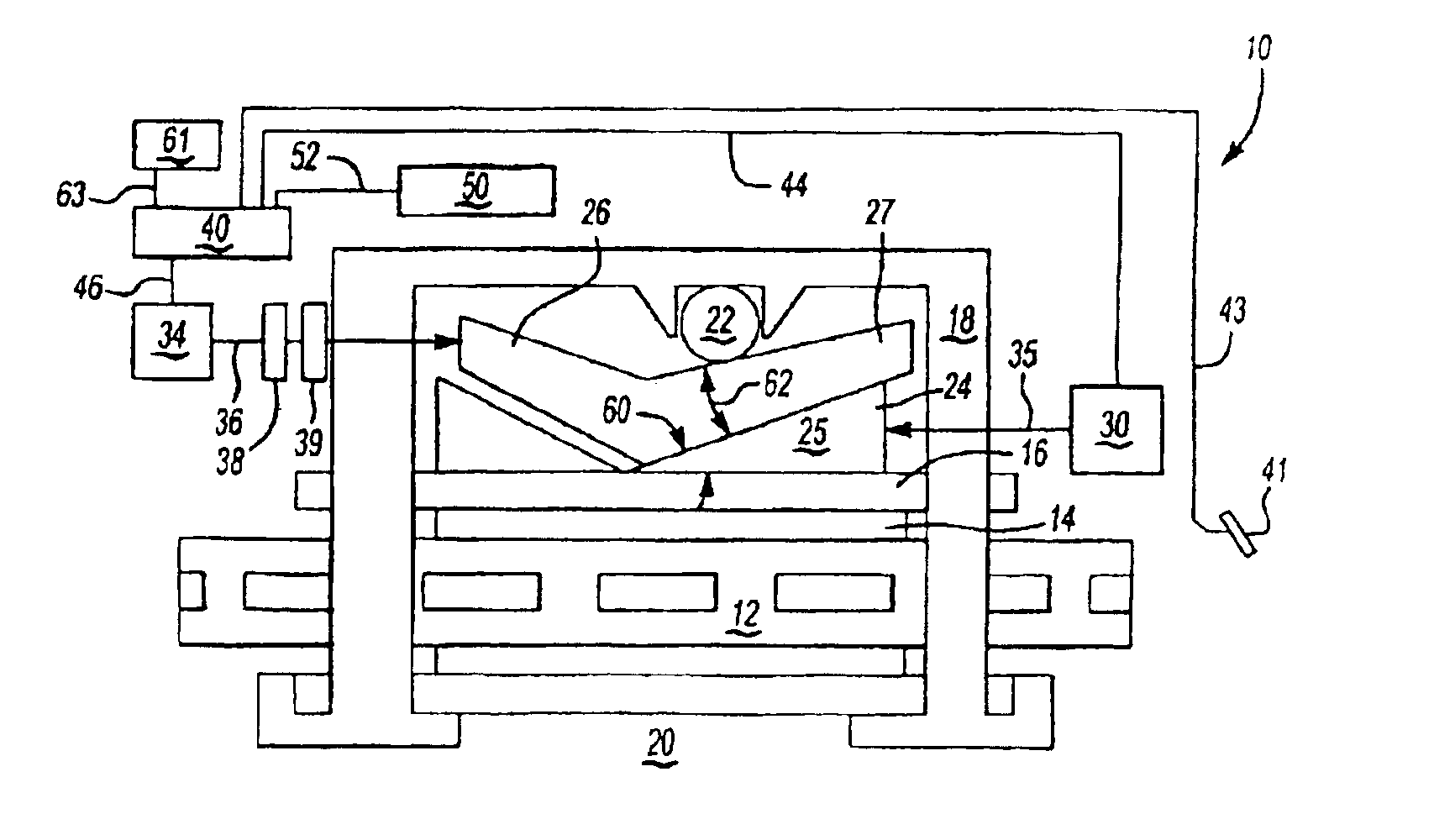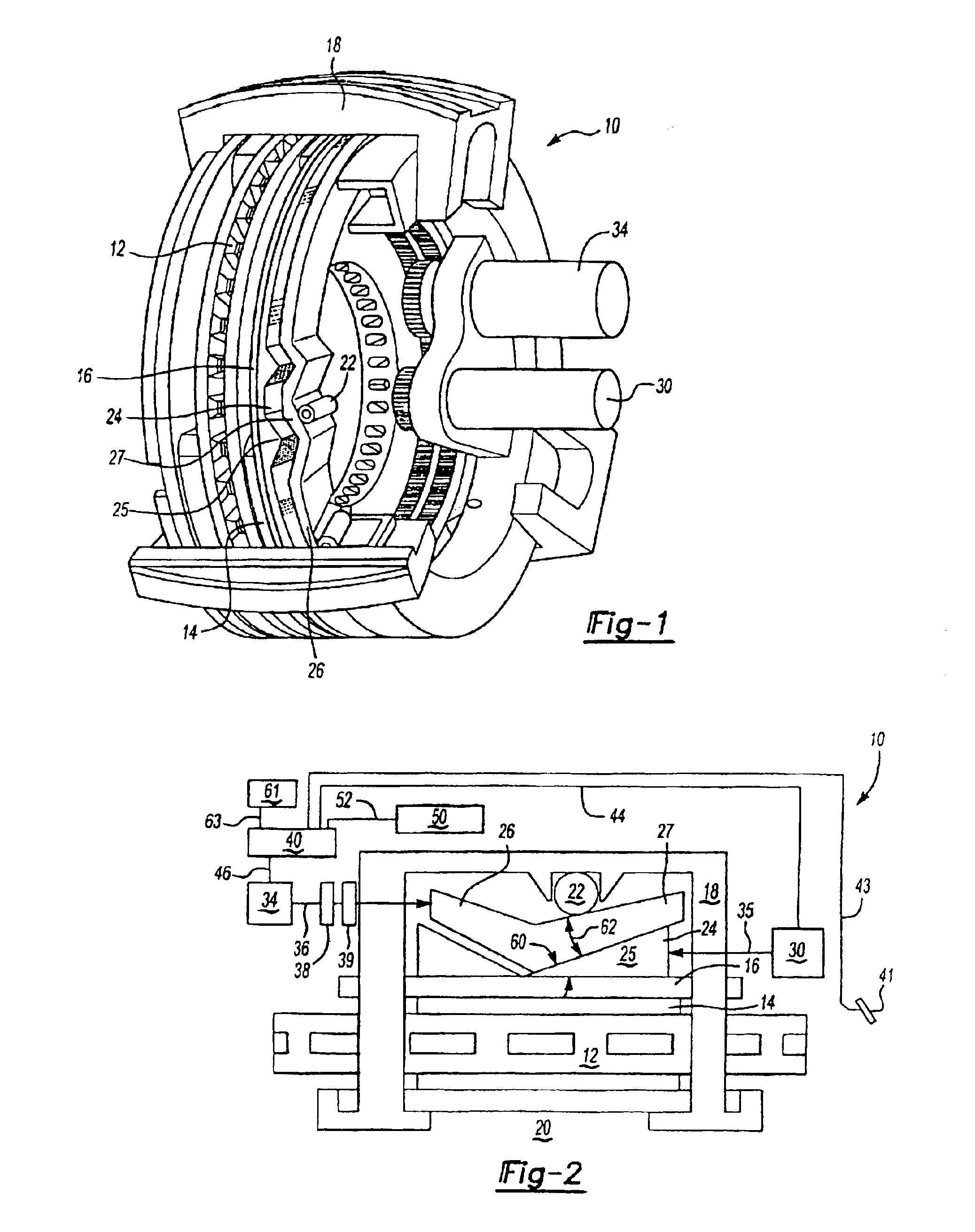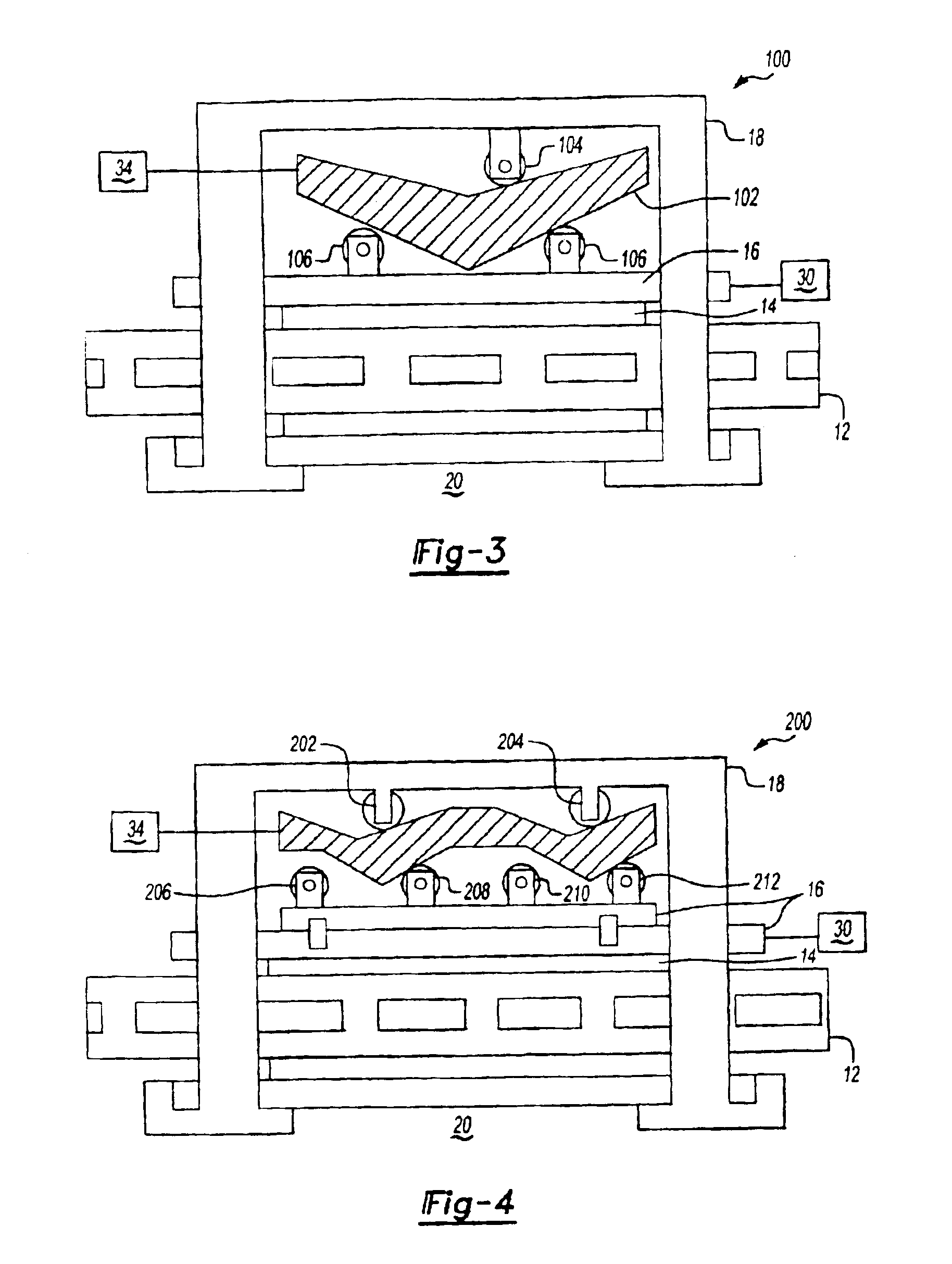Method and an assembly for braking a selectively moveable assembly having a controllably varying amount of self energization
a selectively movable assembly and self-energizing technology, which is applied in the direction of braking systems, braking components, transportation and packaging, etc., can solve the problems of increasing the overall cost of producing the vehicle, undesirably increasing the overall production cost of the vehicle or other selectively movable assembly, and undesirable architectur
- Summary
- Abstract
- Description
- Claims
- Application Information
AI Technical Summary
Benefits of technology
Problems solved by technology
Method used
Image
Examples
Embodiment Construction
)
[0027]Referring now to FIGS. 1 and 2, there is shown an electromechanical brake assembly 10 which is made in accordance with the teachings of the preferred embodiment of the invention.
[0028]Particularly, the electromechanical brake assembly 10 includes at least one rotor 12 which is attached to and which selectively rotates with a wheel (not shown) of the selectively movable assembly or vehicle (not shown) into which the brake assembly 10 is operatively disposed within. Further, as shown, the electromechanical brake assembly 10 includes at least one pad member 14 which may selectively engage the movable rotor 12 in a manner which is more fully delineated below and which is effective to brake the selectively movable assembly which operatively contains the electromechanical brake assembly 10. It should be appreciated that multiple pad members 14 may be used within the brake assembly 10 and that a selectively movable assembly, such as a vehicle, may have one brake assembly 10 operativ...
PUM
 Login to View More
Login to View More Abstract
Description
Claims
Application Information
 Login to View More
Login to View More - R&D
- Intellectual Property
- Life Sciences
- Materials
- Tech Scout
- Unparalleled Data Quality
- Higher Quality Content
- 60% Fewer Hallucinations
Browse by: Latest US Patents, China's latest patents, Technical Efficacy Thesaurus, Application Domain, Technology Topic, Popular Technical Reports.
© 2025 PatSnap. All rights reserved.Legal|Privacy policy|Modern Slavery Act Transparency Statement|Sitemap|About US| Contact US: help@patsnap.com



